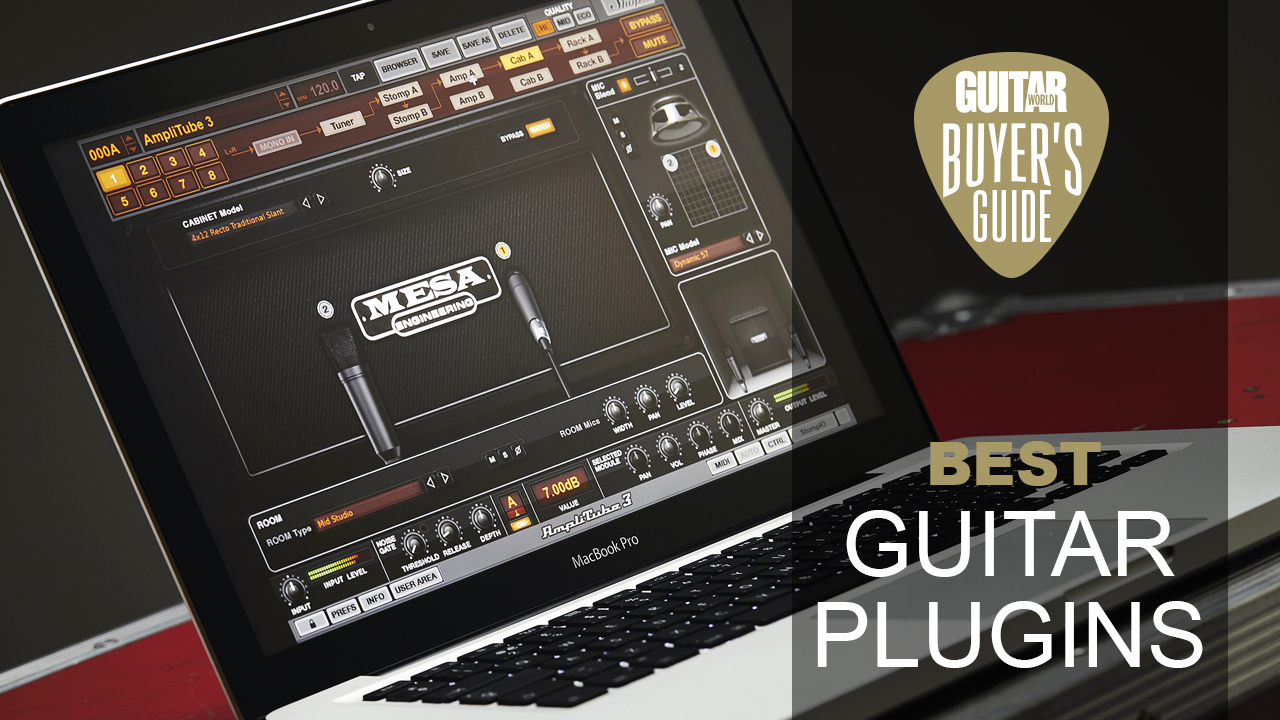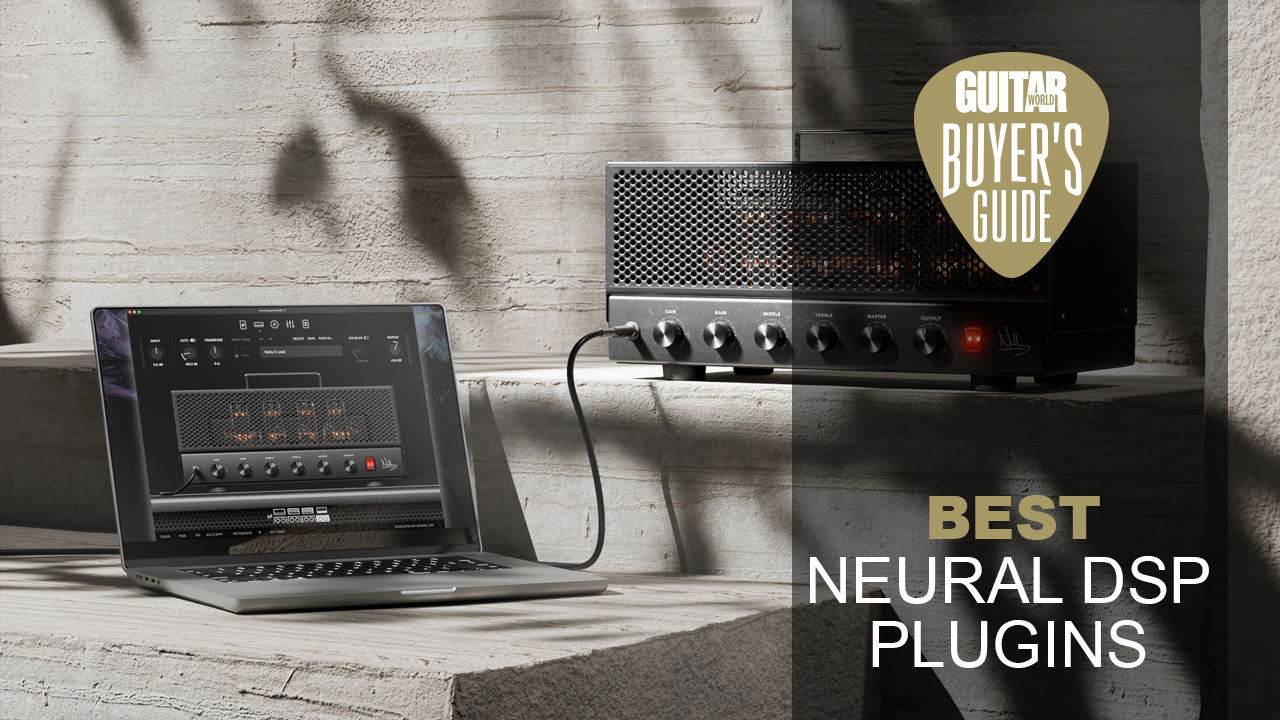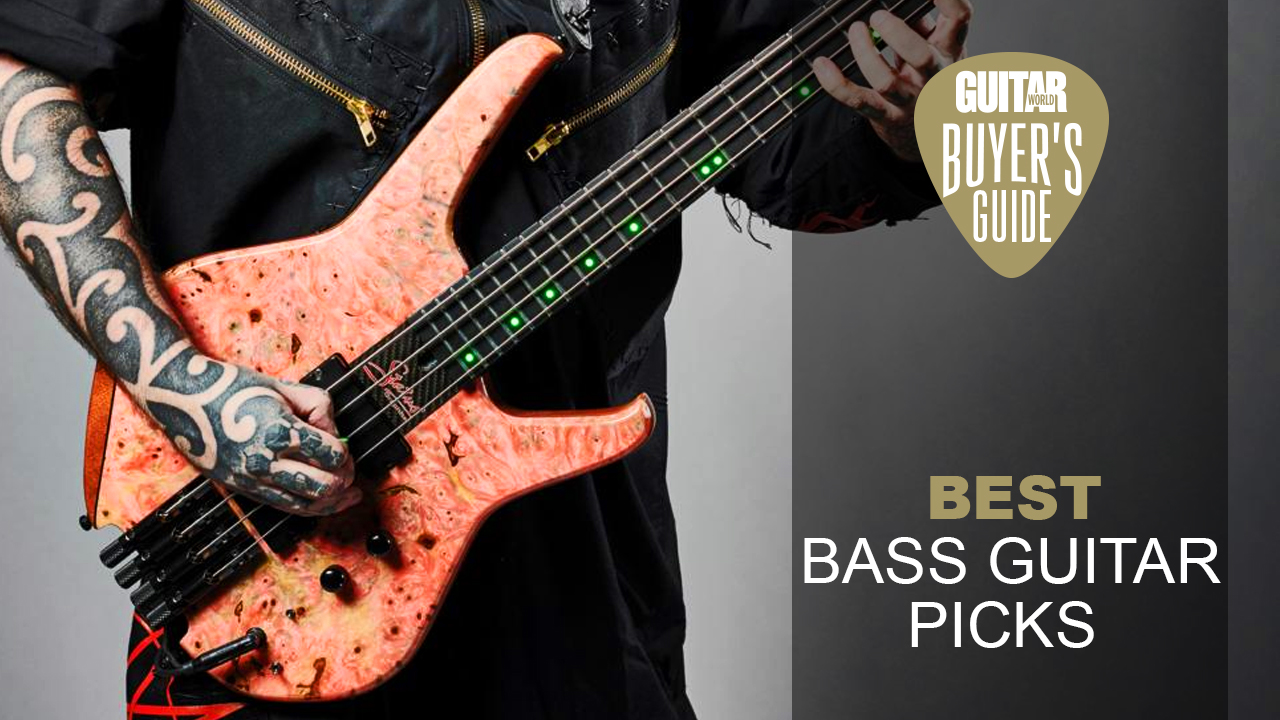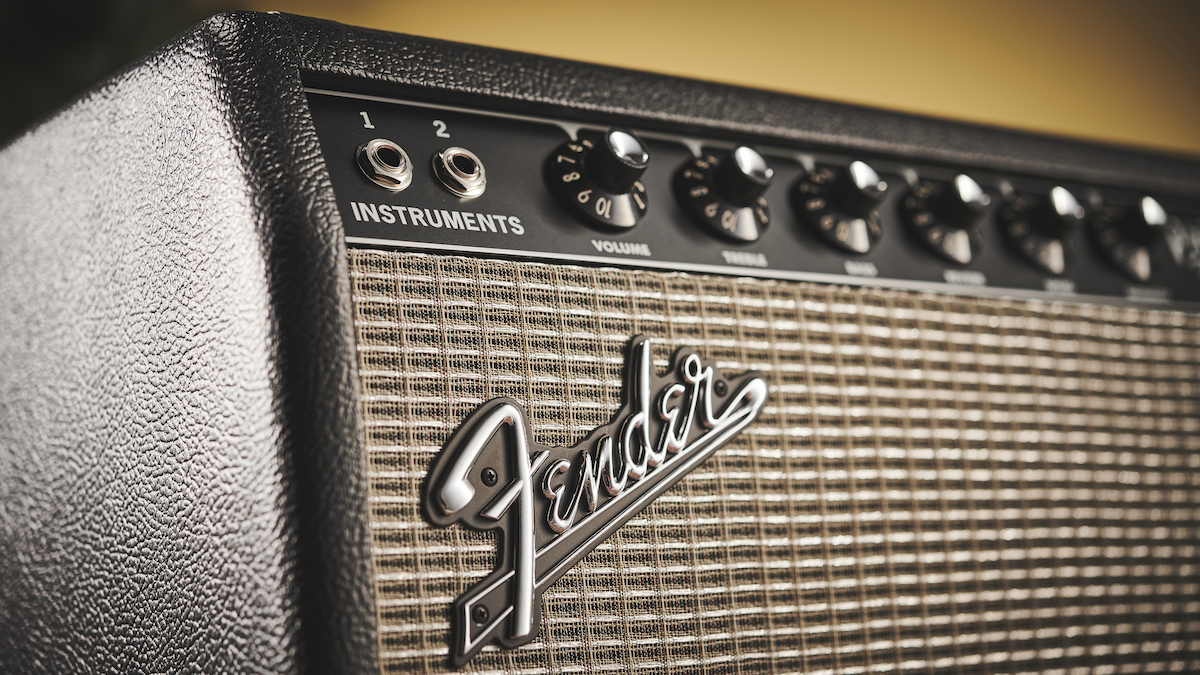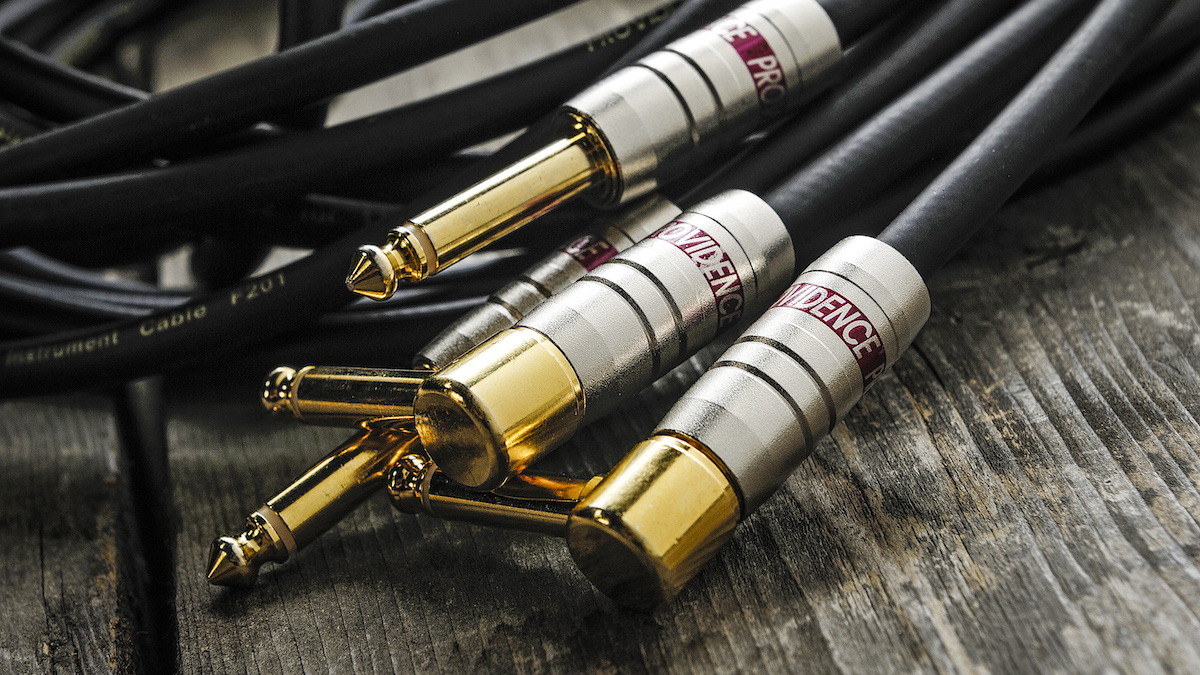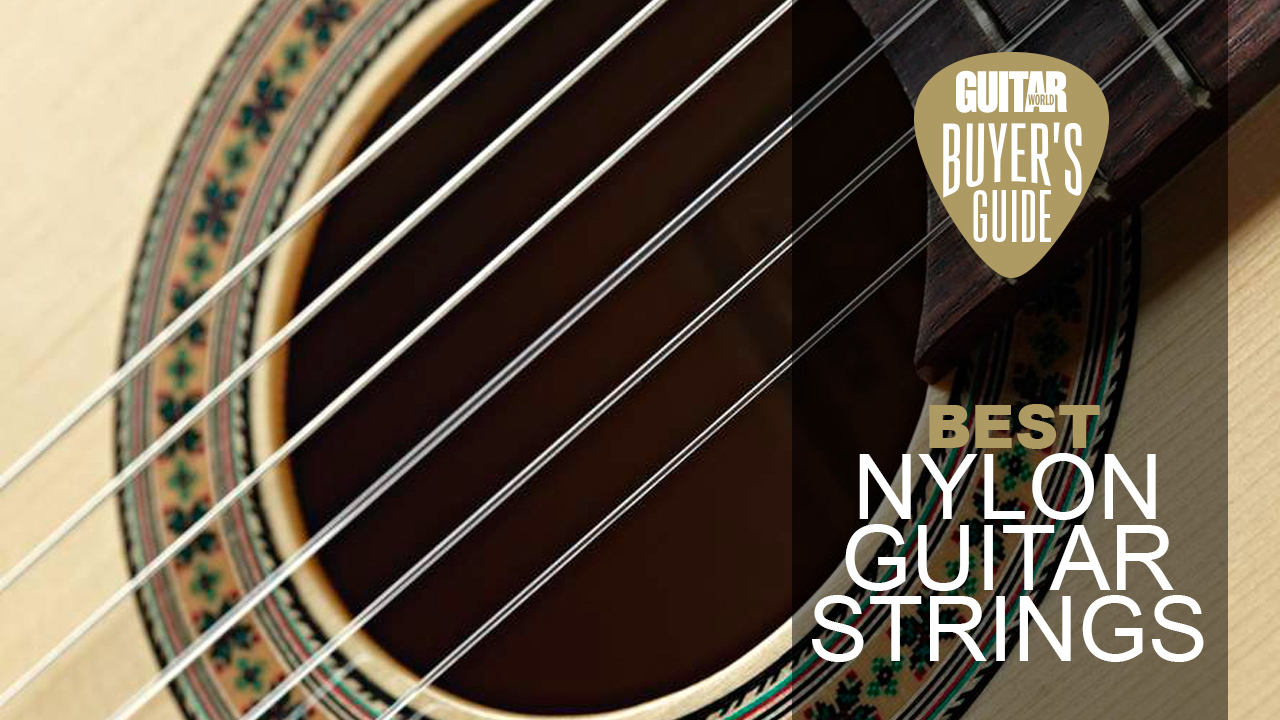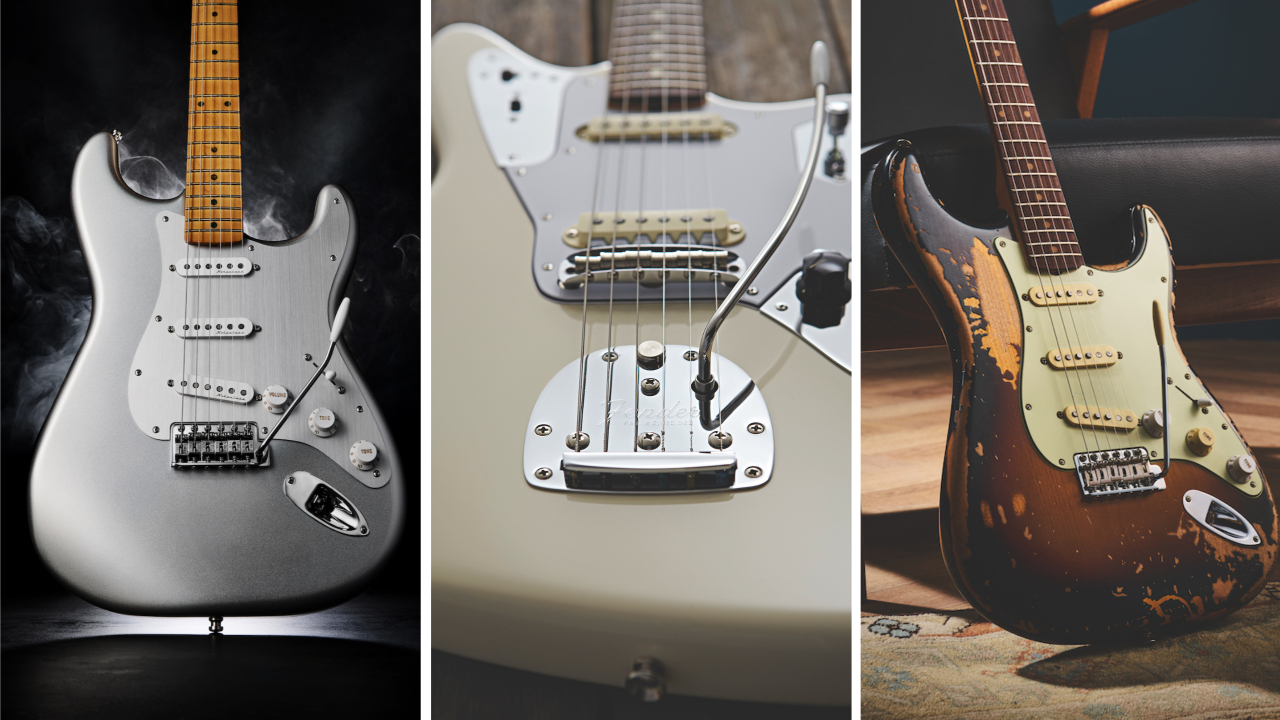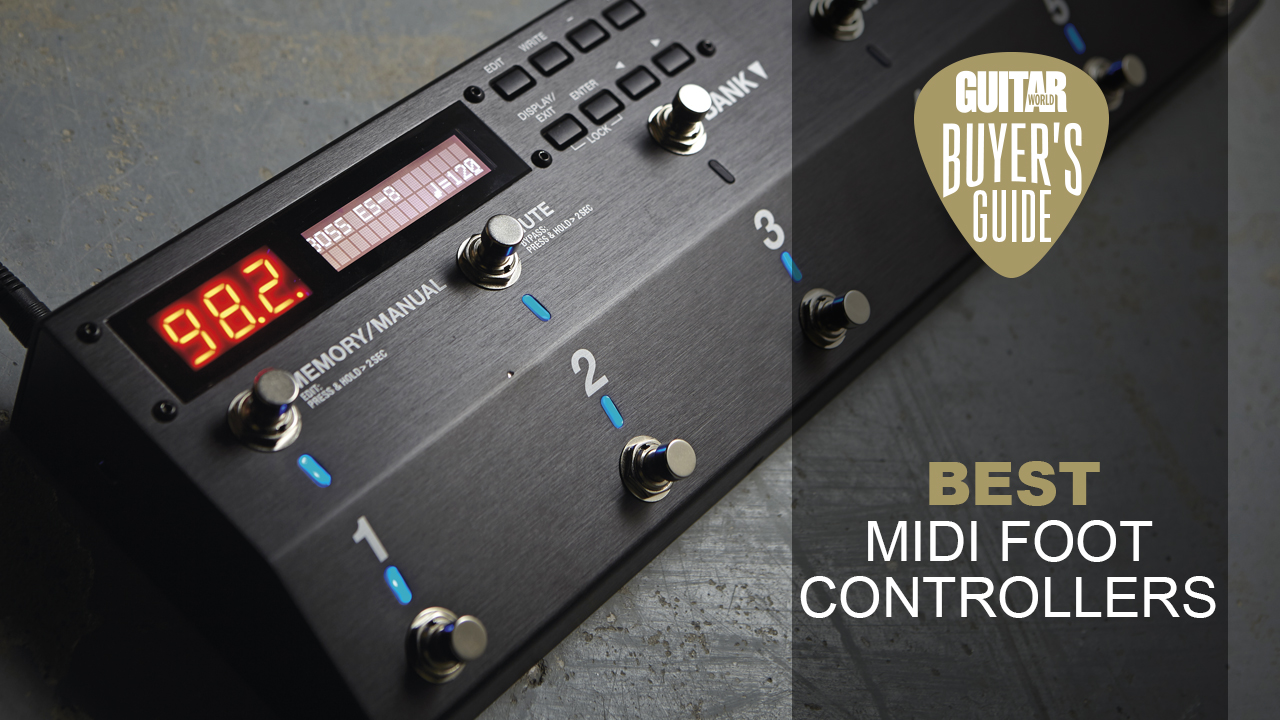Best overdrive pedals 2025: explore which drive pedal is right for you
Overdrive is one of the most essential guitar effects pedals. These are our top picks for every budget
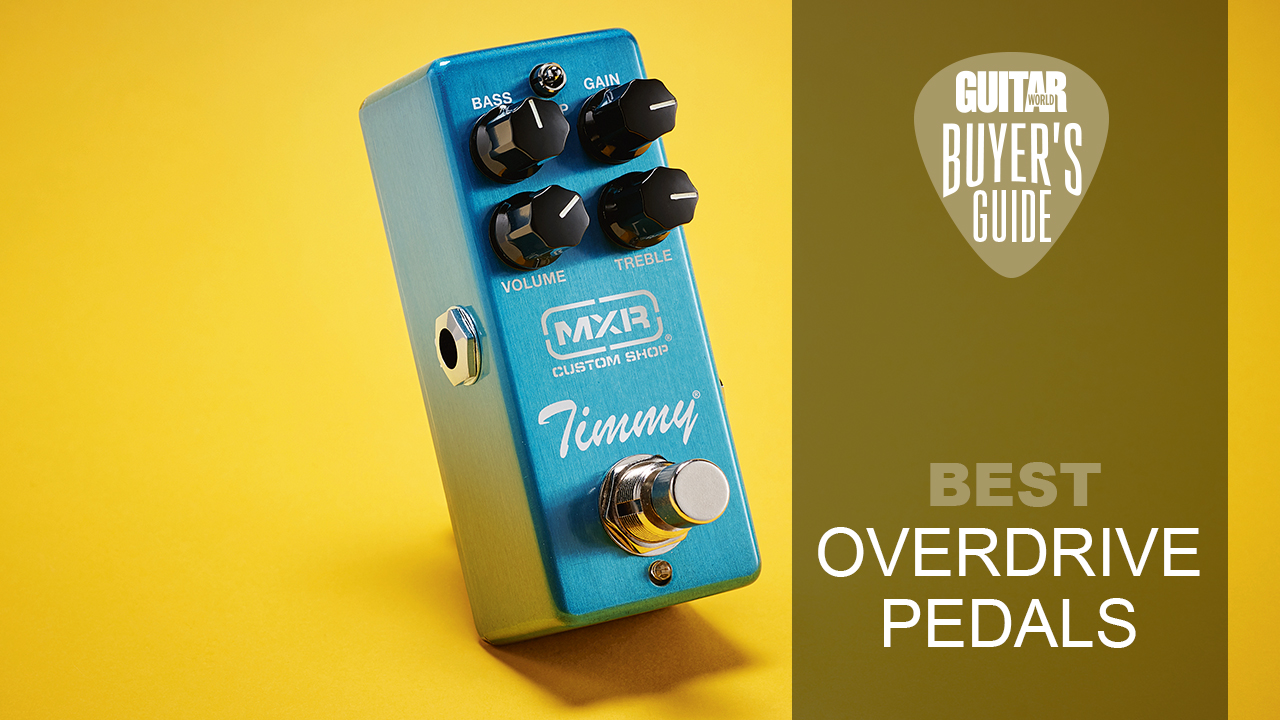
The search for the best overdrive pedal is something that guitar players will never cease to pursue. There are so many options out there, and they’re an incredibly useful tool for such a wide range of players. Much like having a nice guitar and a good amp, a decent overdrive pedal is something that a lot of guitarists can’t live without.
Overdrive pedals vary so much, and there’s a bit of crossover with boost, distortion and fuzz pedals. However, without going too much into the technical side of things, an overdrive pedal essentially helps add some gain to your signal.
The best overdrive pedal for one person might be something that pushes their tube amp into a more natural overdrive and retains all the tonal characteristics of the guitar. However, someone with a solid-state amp might prefer something that adds a bit more ‘something’ to their existing sound. You can even get overdrive pedals that offer the breakup sound of some classic tube amps. Overdrive can be a great effect to always have on, or it can be used to boost a clean sound for solos, or it can be paired with other pedals – there are seemingly limitless ways they can be used.
Here at Guitar World, we've tested hundreds, if not thousands, of overdrive pedals over the last four decades, so we know a thing or two about what makes a fantastic stompbox. Some of the pedals in this guide are clones of old classics, and others are newer designs utilizing modern technology. However, all of them are great options for anyone looking to add something special to their rig. We’ve even added some buying advice further down this article to help you find the best overdrive pedal for you and your needs.
Quick list
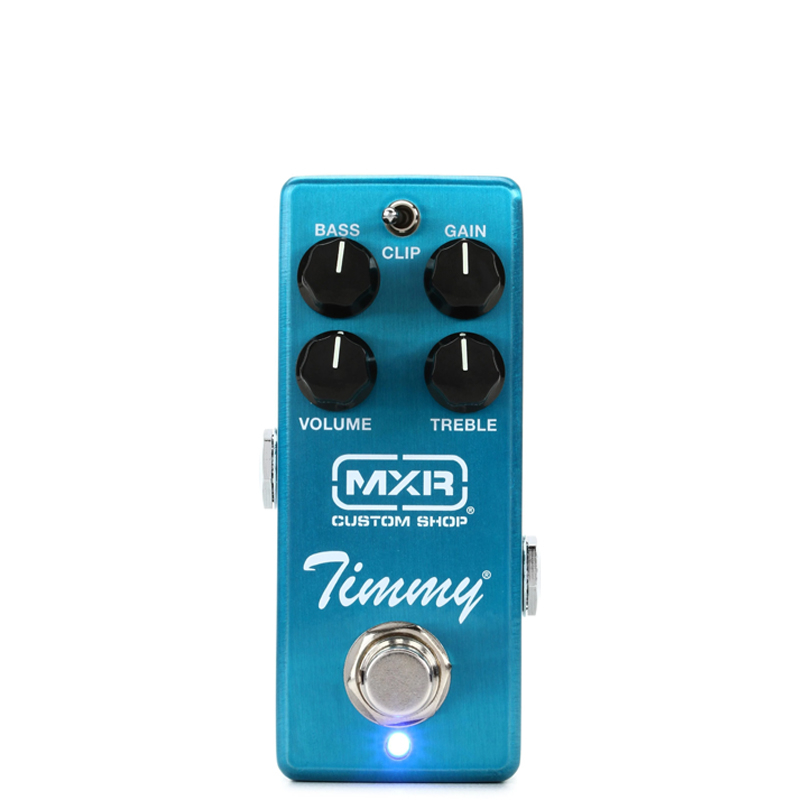
The Timmy is the classic 'transparent' overdrive. Based on the Tube Screamer, but without the same compression and without its trademark 'mid-hump' EQ profile. We'd say the Timmy is much more versatile as a drive.
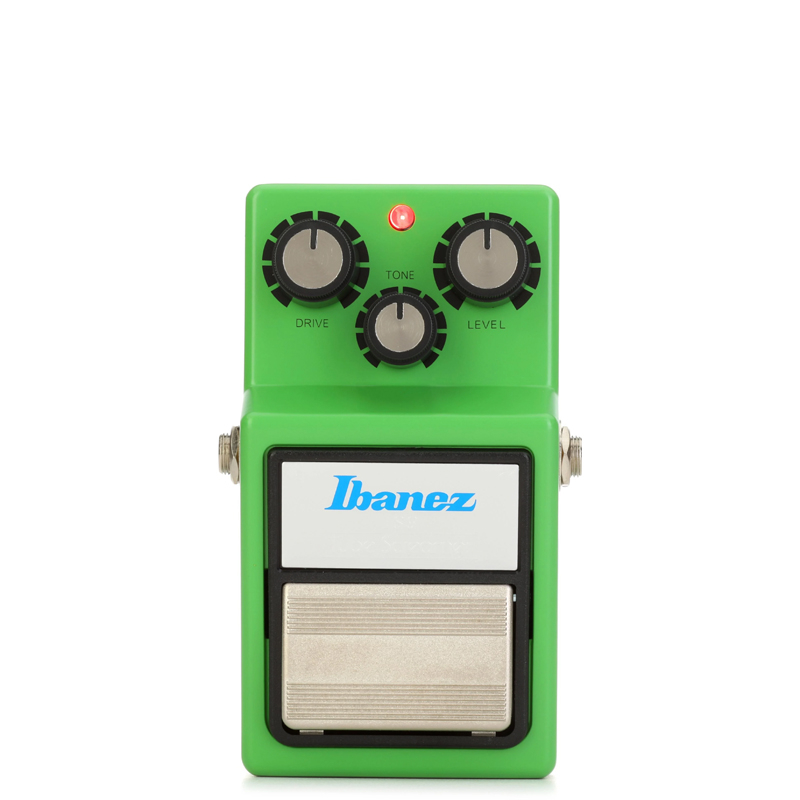
The original, and in many ways still the best overdrive pedal. With the gain up, the volume up and the tone pulled back, the Tube Screamer is pure blues heaven. But open up the tone, push the volume and you'll find that it's more than capable of delivering modern rock tones.
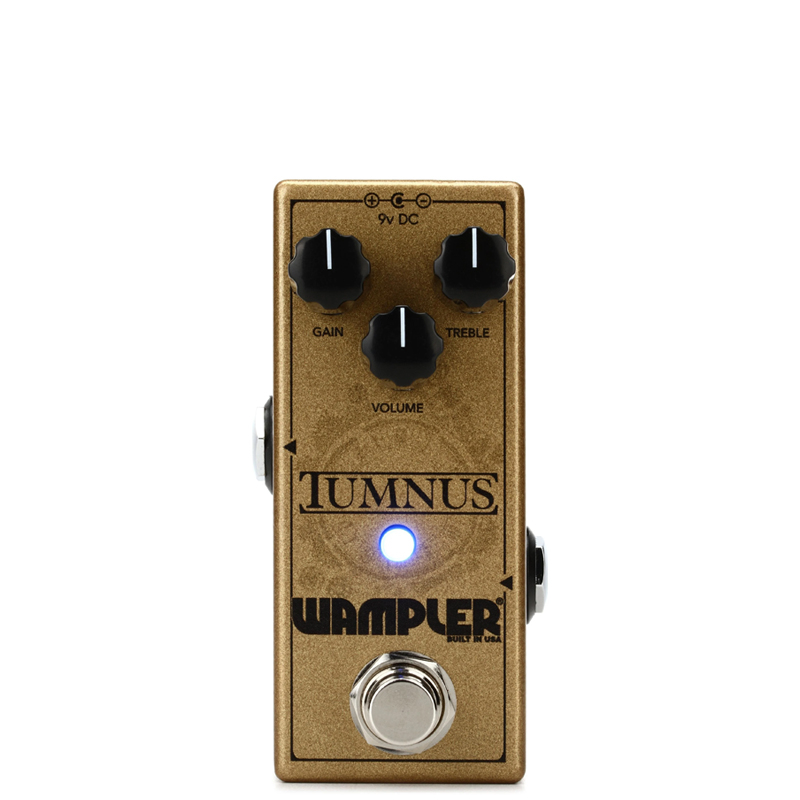
The original Klon Centaur is right in the middle of the Venn diagram overlap for 'rare' and 'expensive', but luckily there are a number of high-quality clones on the market, of which the Tumnus is one of the better units, in our opinion.
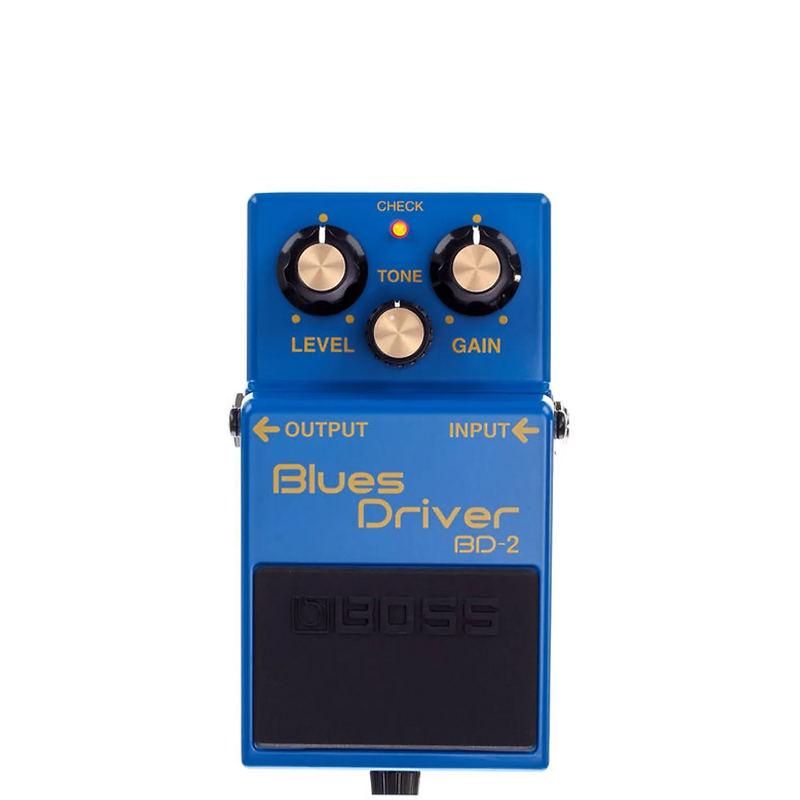
You don't always have to spend a lot of money to get a great overdrive tone. Sometimes, you just need the right combination of gear. Take a nice hollow-body guitar, a vintage-style valve amp, and the humble Boss BD-2, and you have a guitar tone to die for.
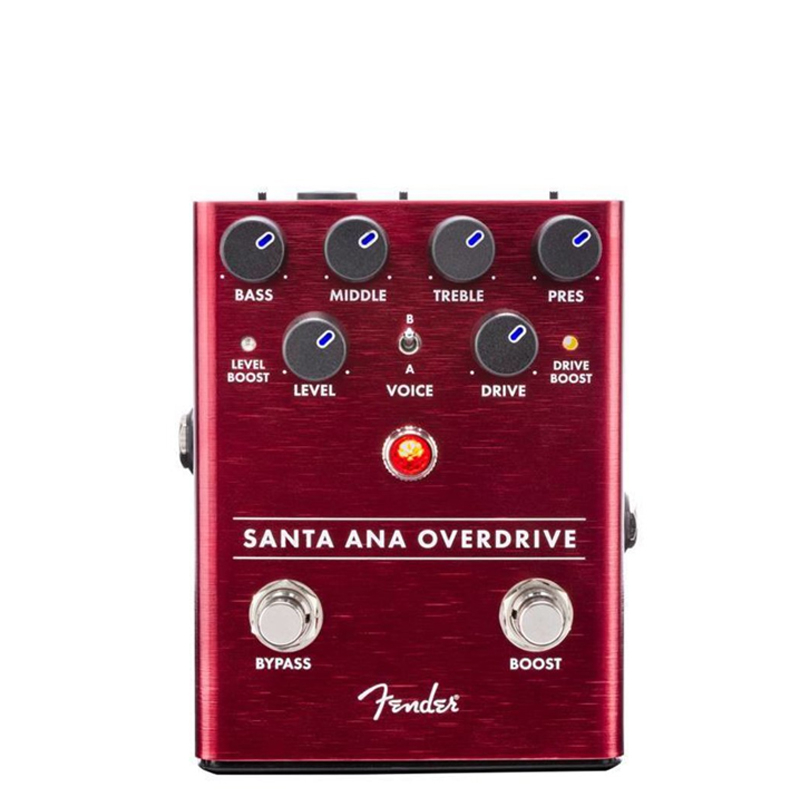
The Santa Ana produces fat lead tones as well as distinctive hard rock rhythm crunch, and the switchable boost function is great for punching a solo above the mix (level setting) or adding extra creamy compression and sustain (gain setting).
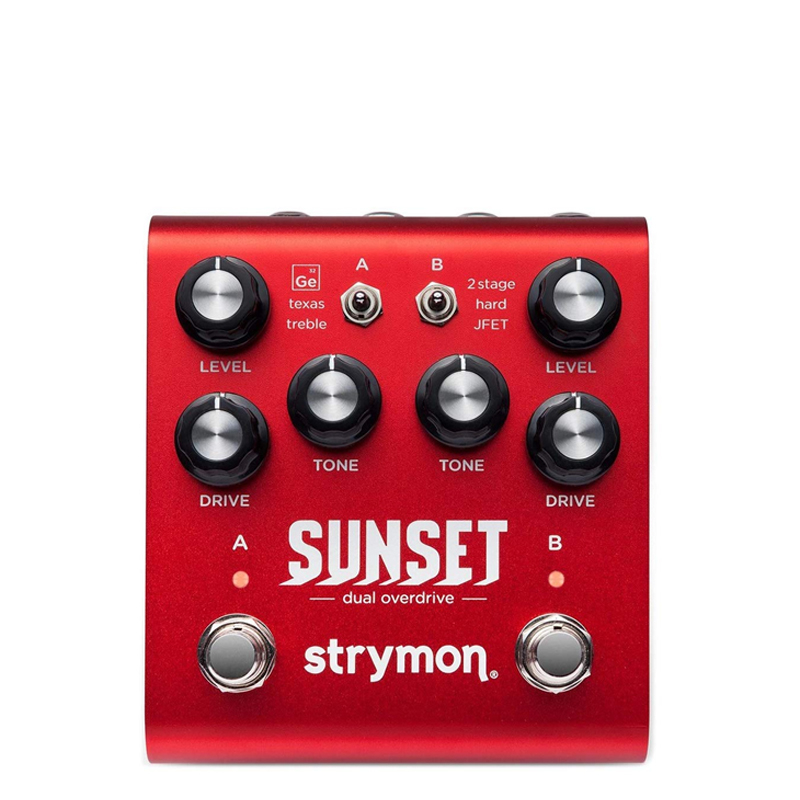
The Sunset is an oddity in this list. Although it has an analog JFET gain stage, the heavy lifting is actually done digitally, allowing it to have a much wider range of potential tones inside the unit.
Best overdrive overall
1. MXR Timmy
Our expert review:
Specifications
Reasons to buy
Reasons to avoid
The Timmy is the classic 'transparent' overdrive. Based on the Tube Screamer, but without the same compression and without its trademark 'mid-hump' EQ profile. We'd say the Timmy is much more versatile as a drive.
All of your favorite tricks with a Tube Screamer can be achieved, with the added bonus that the Timmy stacks incredibly well with other boosts and overdrives. Funnily enough, we even found that it stacks well with, you guessed it, a Tube Screamer.
In addition to its flatter and more 'open' EQ profile, the Timmy boasts arguably more powerful user controls, with a bass cut and a treble cut control. Particularly for heavier rock sounds, being able to remove bass is what allows you to dial in a drive tone that's not heavily compressed, but is also not 'woofy' and loose.
Best with a heavy amp
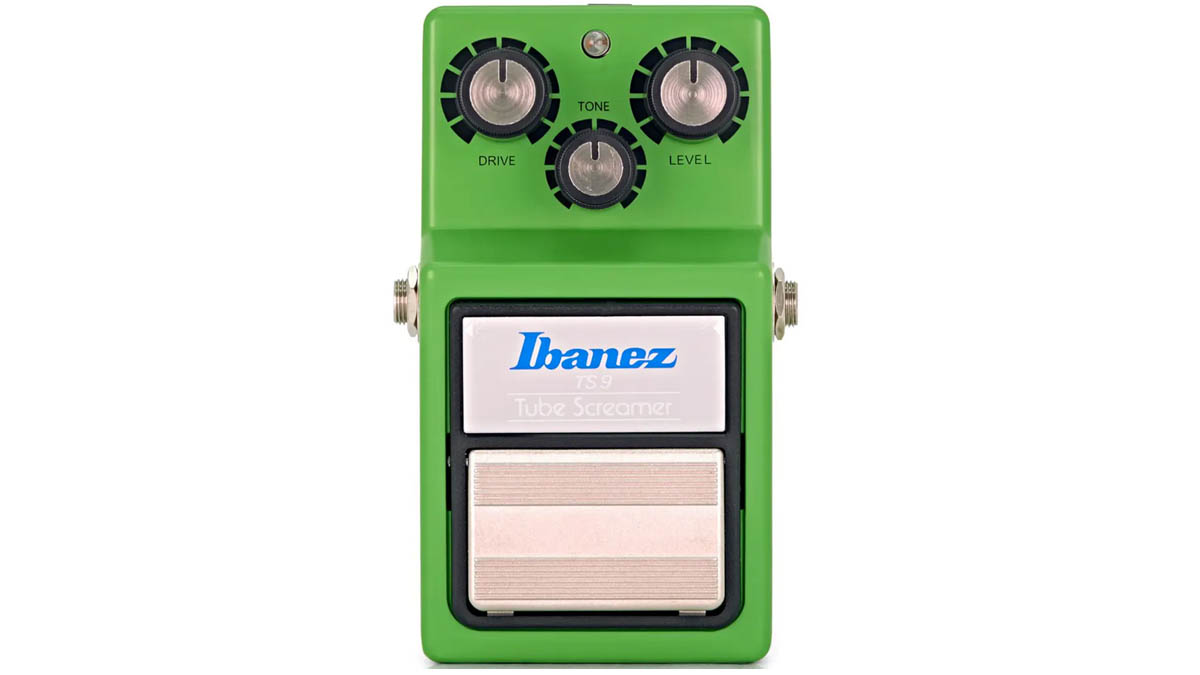
2. Ibanez TS9 Tube Screamer
Our expert review:
Specifications
Reasons to buy
Reasons to avoid
The original, and in many ways still the best overdrive pedal. With the gain up, the volume up and the tone pulled back, the Tube Screamer is pure blues heaven. But open up the tone, push the volume and you'll find that it's more than capable of delivering modern rock tones.
Dime the volume with the gain pulled back a bit, and in front of a tube amp you'll be in metal territory. A classic modern metal 'djent' tone can be achieved with a TS set up as a boost; that is, gain down, volume way up, tone up, in front of a Peavey 5150 or similar high-gain amp. Bring down the bass at the amp and get chugging.
Best Klon-style
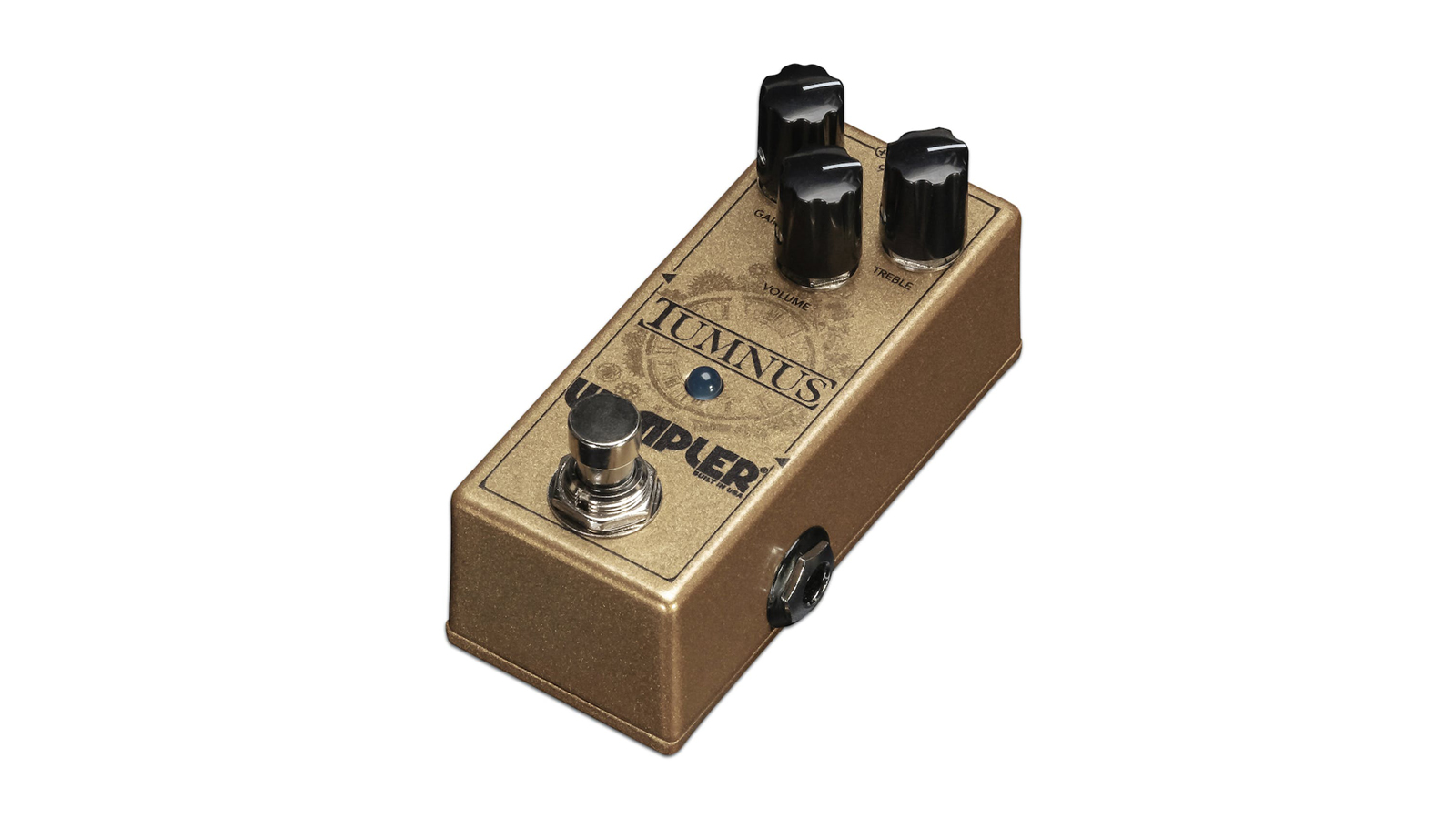
3. Wampler Tumnus
Our expert review:
Specifications
Reasons to buy
Reasons to avoid
The original Klon Centaur is right in the middle of the Venn diagram overlap for 'rare' and 'expensive', but luckily there are a number of high-quality clones on the market, of which the Tumnus is one of the better units, in our opinion.
Not only is it a great-sounding, faithful reproduction of the most unobtainium overdrive in the business, it's also housed in a small-form-factor, 1590A-sized enclosure, meaning it doesn't take up much pedalboard real estate at all.
In terms of sounds, the Klon is often described as 'transparent', but we've always found it to be distinctly colored, chewy in its drive tone at lower gain settings, and crunchy and dry with the gain up – these qualities are also true of the Tumnus.
Although it may not be transparent, it can still be used as a slightly colorful boost in front of a tube amp with the gain down and volume up. And while it would be mad to pay for an original unit for this kind of use, employing the more affordable Tumnus to smash a tube amp into saturation isn't sacrilege.
Best for blues

4. Boss BD-2 Blues Driver
Our expert review:
Specifications
Reasons to buy
Reasons to avoid
You don't always have to spend a lot of money to get a great overdrive tone. Sometimes, you just need the right combination of gear. Take a nice hollow-body guitar, a vintage-style valve amp, and the humble Boss BD-2, and you have a guitar tone to die for.
It should be fairly apparent that the Boss Blues Driver is great at replicating those light break-up sounds associated with great valve amps. With that being said, this mighty blue box can also do great rock tones, as well as a relatively convincing clean boost.
It may be affordable and seen as rather pedestrian, but this pedal has been spotted on the pedalboards of Prince, Billie Joe Armstrong, and Paul Weller - and well, if it's good enough for the purple one, it's good enough for you!
Best dual drive
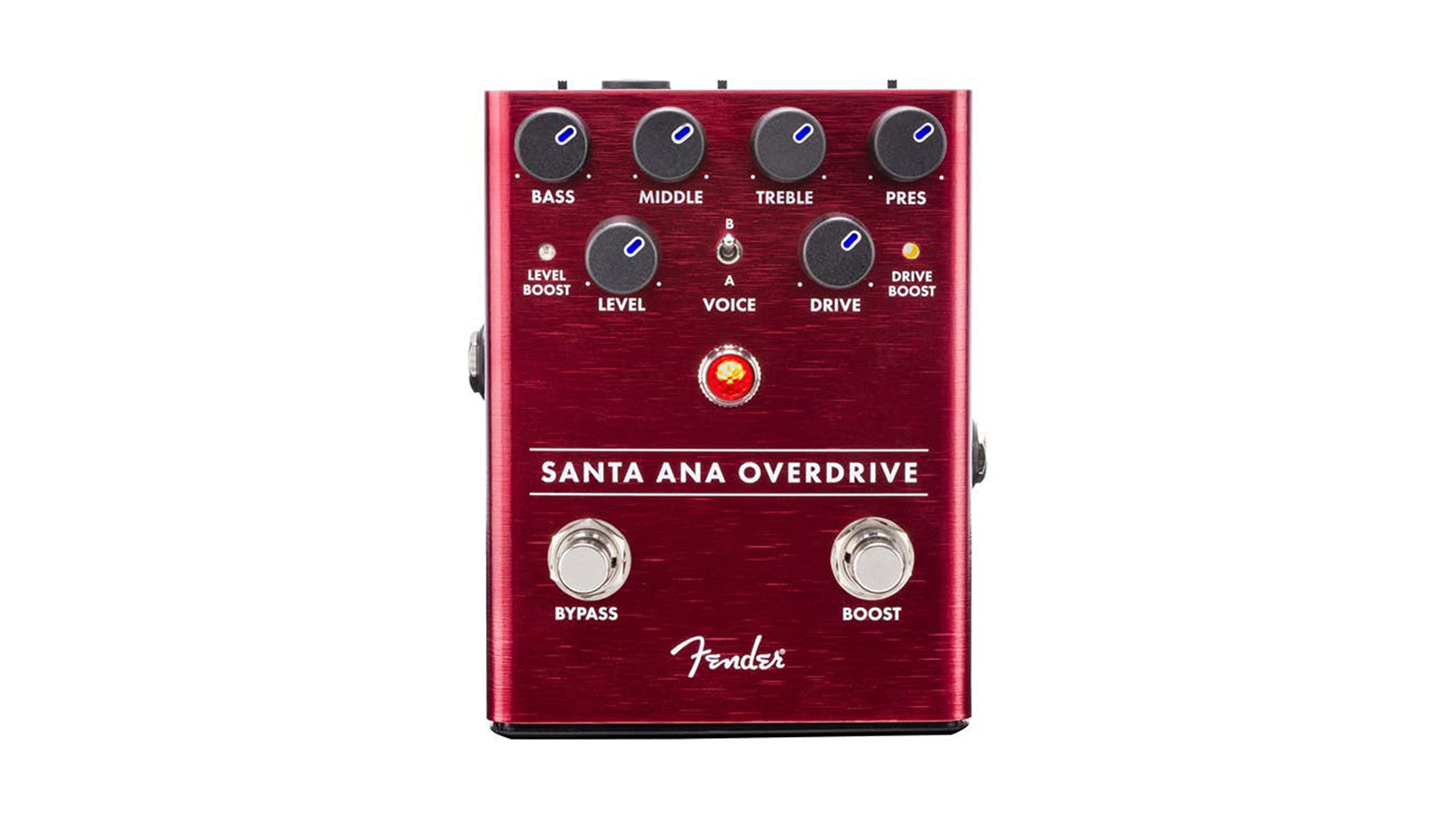
5. Fender Santa Ana Overdrive
Our expert review:
Specifications
Reasons to buy
Reasons to avoid
The Santa Ana produces fat lead tones as well as distinctive hard rock rhythm crunch, and the switchable boost function is great for punching a solo above the mix (level setting) or adding extra creamy compression and sustain (gain setting).
The Santa Ana overdrive also includes a true bypass/buffer switch and a boost function switch for selecting level or gain boost, in addition to three-band EQ, plus presence and two different voice modes.
Other cool features include the magnetic battery access compartment at the front of the pedal and the LEDs that illuminate the knob settings. What's even cooler is you can control these lights with the flick of a switch on the rear panel.
Best digital drive
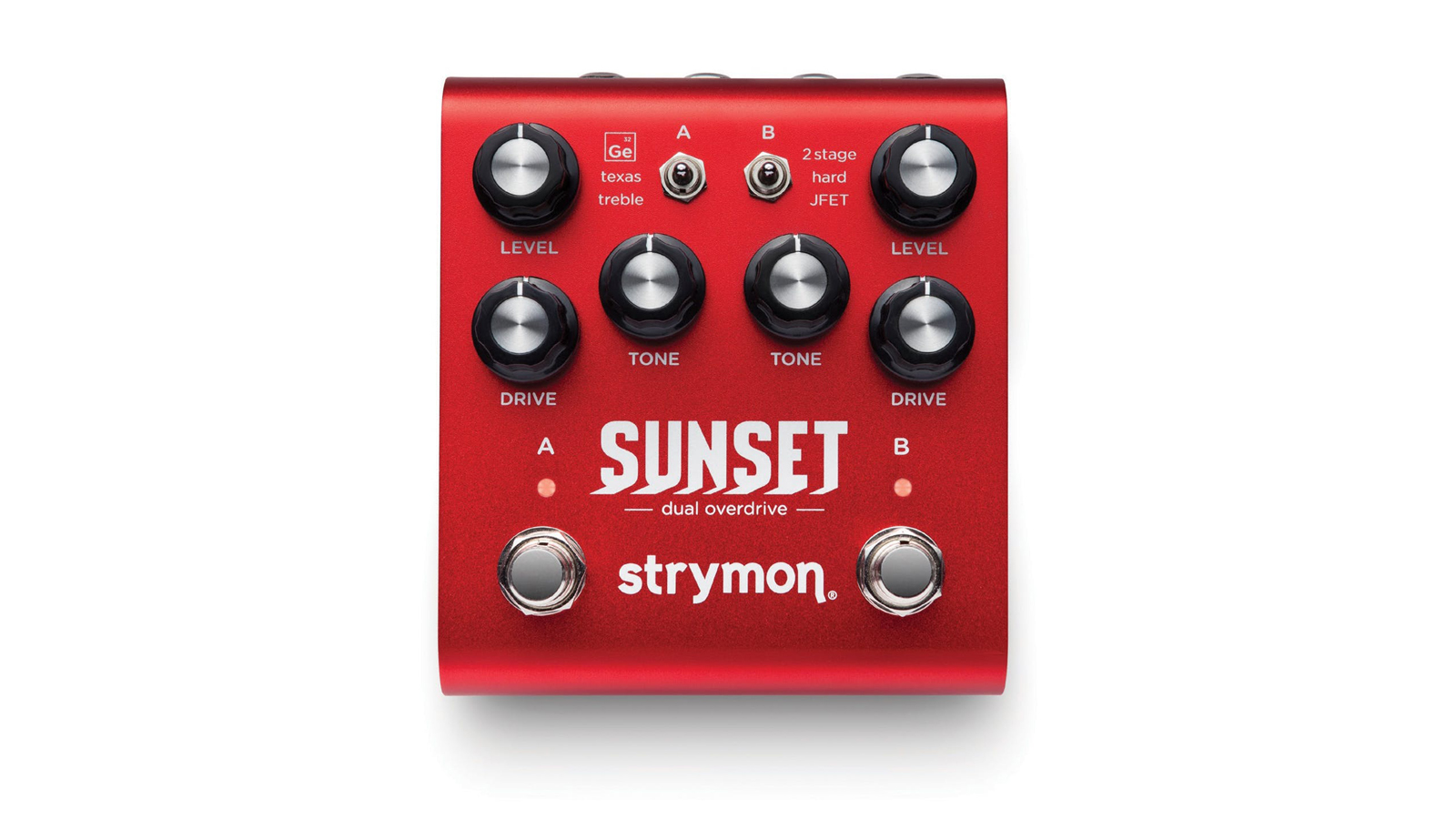
6. Strymon Sunset
Our expert review:
Specifications
Reasons to buy
Reasons to avoid
The Sunset is an oddity in this list. Although it has an analog JFET gain stage, the heavy lifting is actually done digitally, allowing it to have a much wider range of potential tones inside the unit.
It has two independent drives with independent controls, easily accessible via the front panel. The left-hand side sports a germanium diode-based drive, which is similar to some models of the OCD; a Tube Screamer-style drive and a treble boost, while the right side has a more complex two-stage drive, a hard-clipping distortion that's somewhat akin to a ProCo RAT, and the analog JFET boost.
These options alone offer a huge spread of versatility, but when you consider that you can also stack the sides to create even more complex drive tones, the true power of the Sunset is revealed. From Queen-style treble boosting to modern metal, this pedal really can do it all, and without breaking a sweat.
Perhaps the most gratifying thing about the Sunset is that, with a lot of volume boost on tap - despite being a digital pedal - it can actually push a tube amp into saturation just as convincingly as an analog drive or boost.
Not only that, but the combination of treble boost and the JFET analog boost option mean that, tone-wise, you can craft unique boost timbres for complementing your valve amp's tone.
More options...
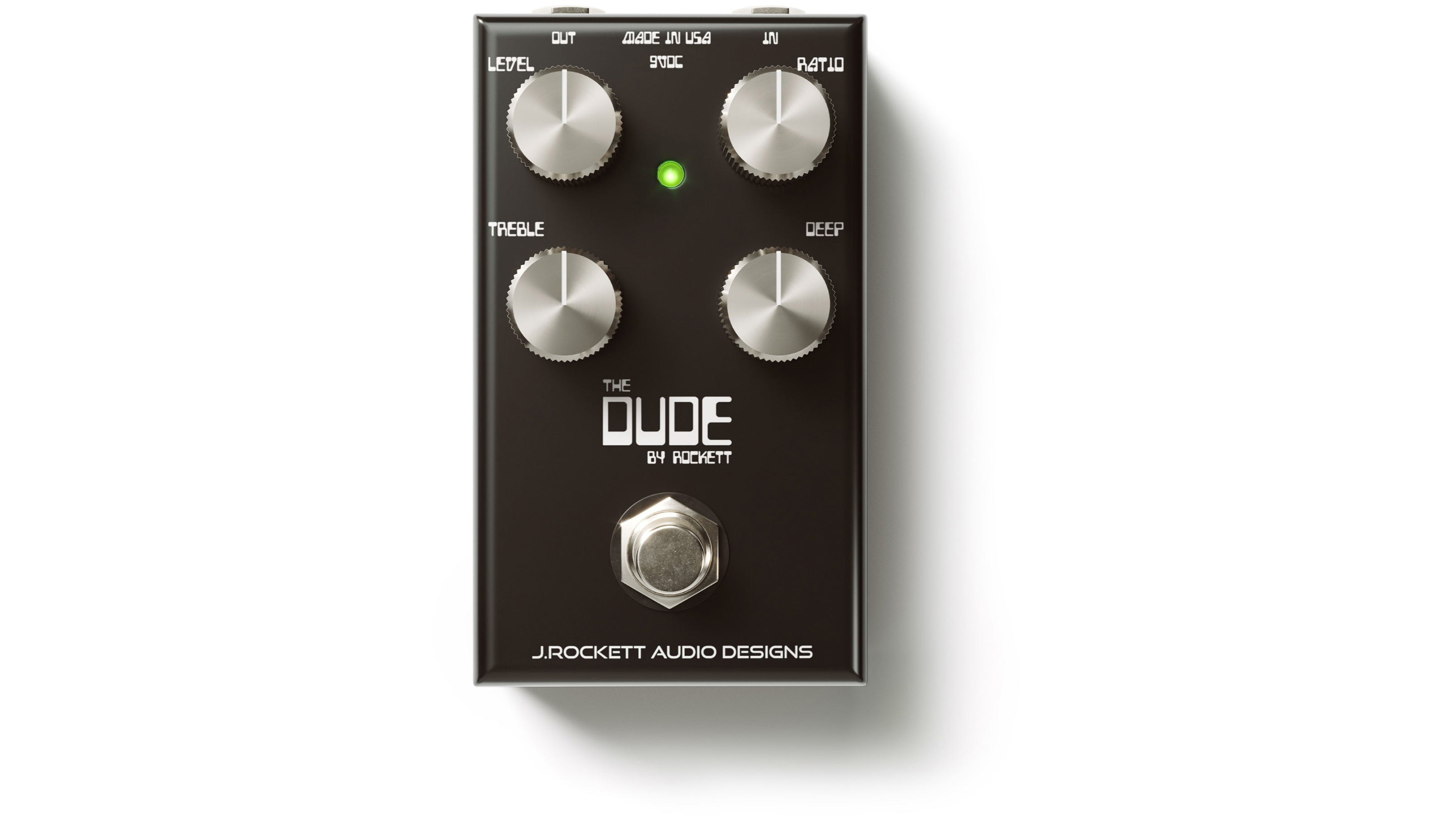
7. J Rockett The Dude V2
Our expert review:
Specifications
Reasons to buy
Reasons to avoid
The Dude is a D-style overdrive pedal; that is, it’s trying to replicate the sound of a Dumble amp, which are some of the most expensive and sought-after amps in the world. It’s not high gain, but it offers enough to cater for a wide range of blues, classic rock, even straying into hard rock territory.
The Dude is sweet-sounding and very dynamic. The volume controls the output and gain, and a ratio knob blends in the overdriven sound with your clean tone. This means you’ve got a way of controlling how prevalent the gain is in your sound and makes for a really versatile feature. Then you’ve got separate controls for adjusting treble and bass, so more than enough to really dial in your tone to your liking.
Sometimes ‘amp in a box’ type pedals can miss the mark, however The Dude hits the nail on the head. Does it offer the same sort of response and gain structure as a genuine Dumble amp? I don’t know, because I’ve never played one – most people haven’t, but it certainly gets you in the right ballpark and, at an absolute fraction of the cost of a Dumble, that can’t be bad.
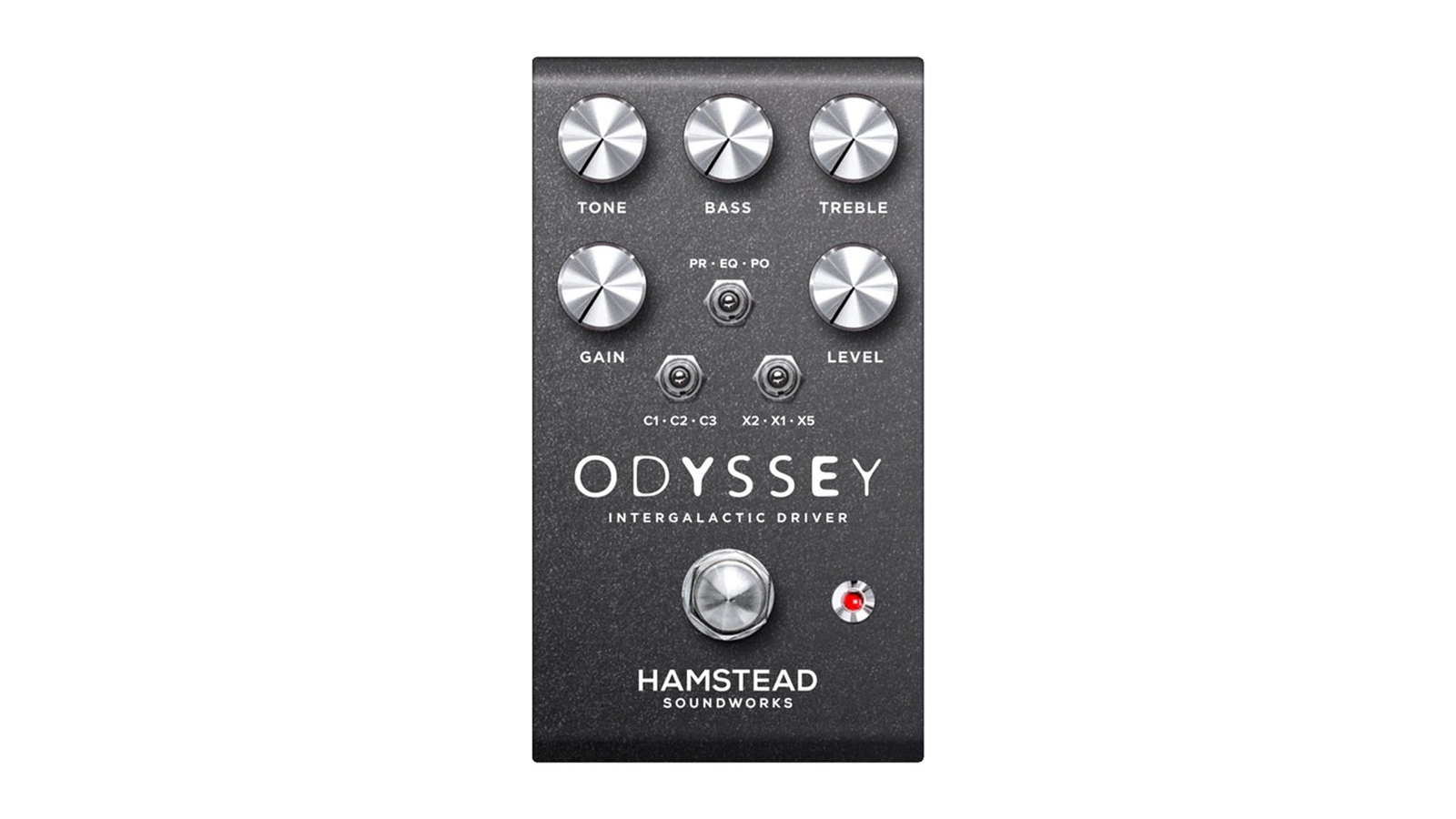
8. Hamstead Soundworks Odyssey
Our expert review:
Specifications
Reasons to buy
Reasons to avoid
The brainchild of Peter Hamstead, the Odyssey - like the Tight Rock - is a drive built by an audio engineer who's primarily an amp designer. And like the Tight Rock, it feels more like an 'amp in a box' design than the lower-gain overdrive options out there.
Unlike the Tight Rock, however, the Odyssey, with its multitude of clipping options and broader range of gain on tap, can actually get convincingly into low-gain and boost territory, although it's at mild hair and above settings that the pedal shines.
With the gain at the higher end of its range, it can get the kind of drive tones that Billy Howerdel coerces out of his hot-rodded Marshalls in A Perfect Circle. But it's by no means a one-trick pony, and responds surprisingly well to a range of different amps.
Perhaps the greatest strength of the pedal is its powerful EQ options, which allow you to dial in and refine a drive tone that works, and then make informed adjustments to that if you, say, have to change amps because you're borrowing backline at a gig.
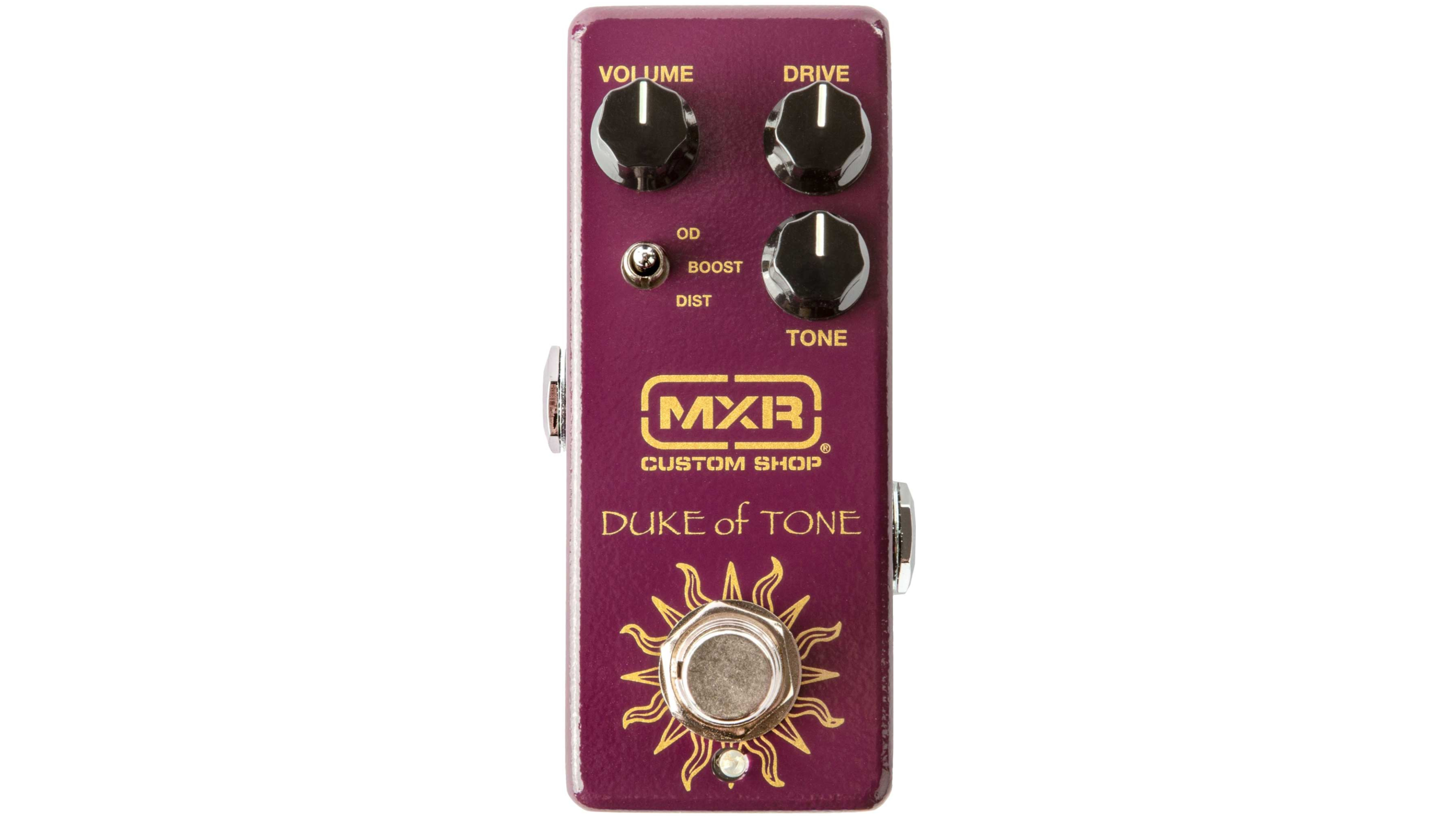
9. MXR Duke Of Tone
Our expert review:
Specifications
Reasons to buy
Reasons to avoid
The Analogman King Of Tone is one of the most sought-after and rare pedals available today. Their rarity is mainly due to them still being produced by hand, leading to a waiting list that runs to several years! This results in a pedal that's not only hard to get a hold of, it's also insanely expensive.
However, MXR has released a precious alternative for those seeking the KOT tone on a budget and better yet, there's no waiting list. Made in conjunction with Analogman's Mike Piera, the MXR Duke Of Tone perfectly recreates the TS/Bluesbreaker tone the KOT was famous for, albeit in a smaller, one-footswitch format.
This regal pedal from MXR has blown our minds. It's so close to the original sound that it's scary. So, if you've always wanted to add a little of that Analogman magic to your rig but you don't have years to wait on the perfect overdrive, give the MXR Duke Of Tone a try - you won't be disappointed.
Read our full MXR Duke Of Tone review
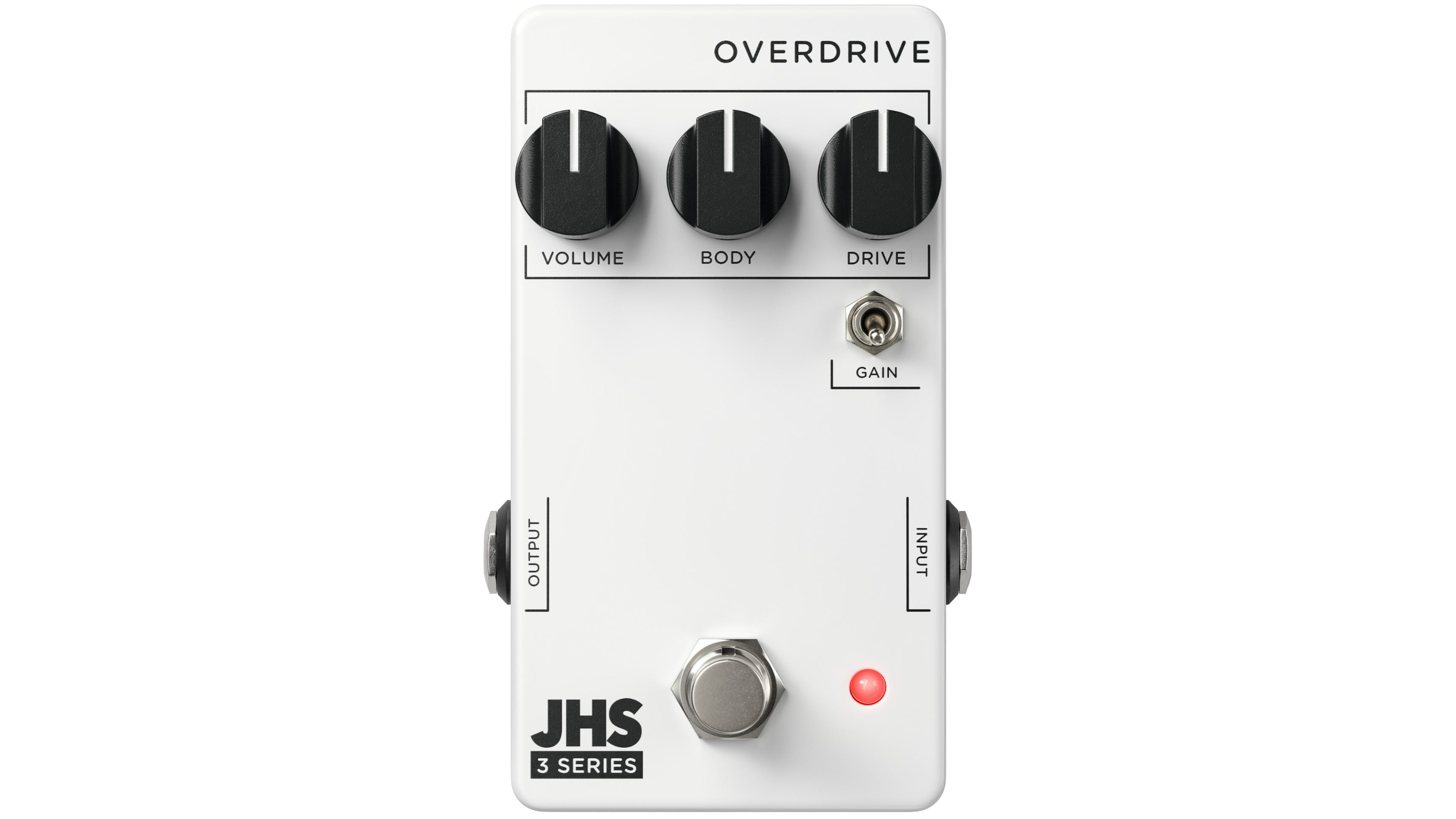
10. JHS 3 Series Overdrive
Our expert review:
Specifications
Reasons to buy
Reasons to avoid
The 3 Series from JHS offer players high-quality, no-frills effects pedals at a great price. This particular offering is certainly one of the best overdrive pedals around, especially when you consider the fact that it comes in at under $/£100. It’s really versatile and offers you everything from a subtle clean boost, to transparent overdrive, through to compressed, crunchy, pushed tube amp-like tones.
It’s got an easy to use layout, with controls for volume, gain and body, which is basically an all-in-one EQ knob. Then there’s a gain toggle switch that lets you choose between more open, crunchy sounds and more compressed and saturated tones. All in all a useful little pedal with a great range of overdriven tones.
FAQs
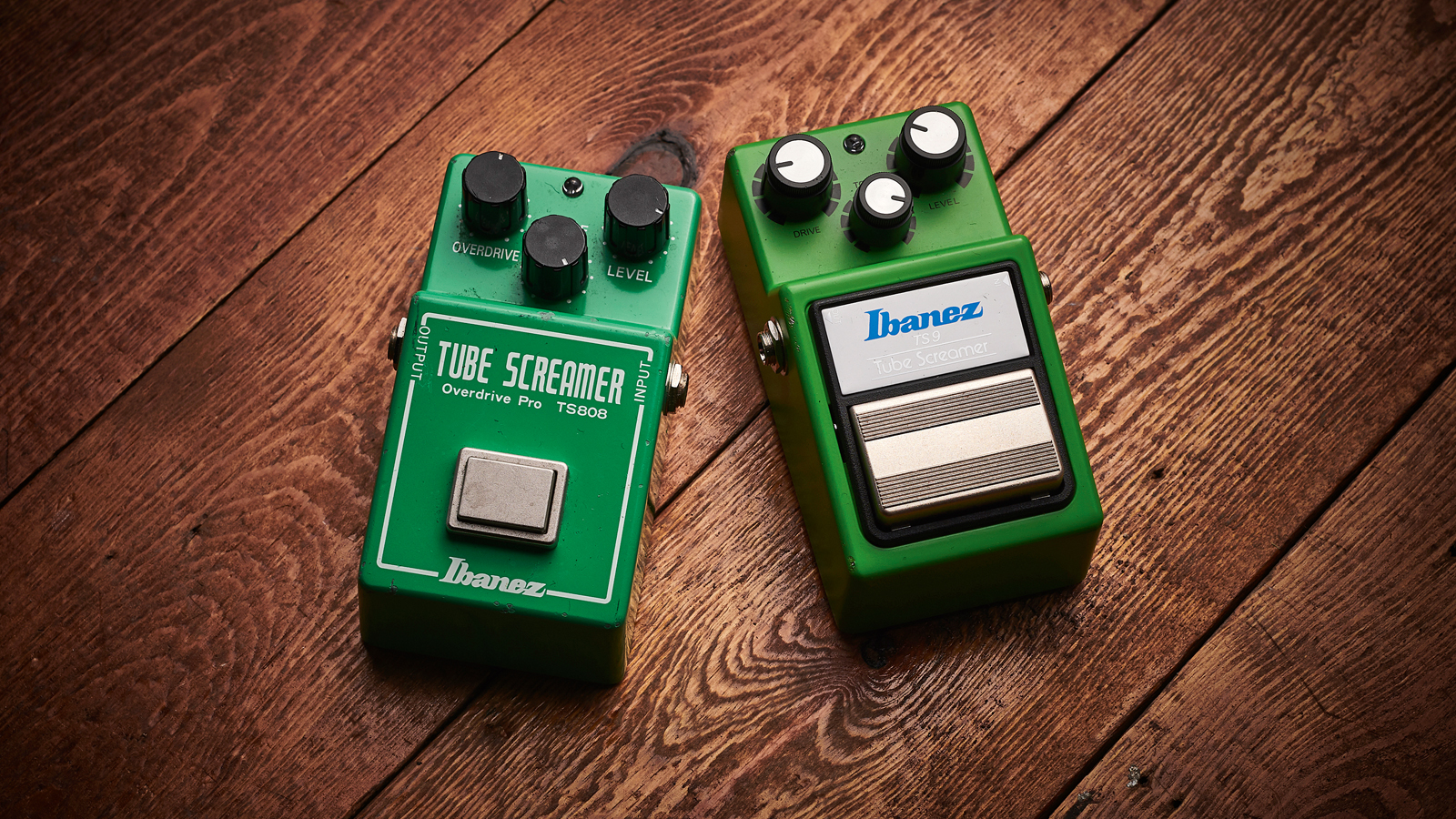
What is overdrive?
Overdrive is the name we give a specific style of distortion effect. Overdrive pedals are designed to sound like a very loud amplifier that's being pushed into clipping or overdriving.
Overdrive pedals tend to produce less gain than distortion or fuzz pedals, and sonically, they tend to be rounder and more natural sounding to our ears.
So, if you're looking to recreate the legendary tones of your classic rock heroes, turn a clean amp into a beautifully barking rock machine or just add a color to your already driven tube amp, then an overdrive pedal is the unit for you.
What should I look for in an overdrive pedal?
A good starting point when looking for the best overdrive pedal is to think about how much gain you need. Some pedals offer everything from a little signal boost to push your amp, all the way to crunchy, almost high-gain tones, bordering fuzz in some cases. Others might only add a touch of transparent overdrive to your sound.
Related to this is also how you plan on using the pedal. Using an overdrive pedal on an already distorted amp will sound very different to using it through a clean amp. You’re more likely to hear the characteristics of the pedal (if it has some) in the latter case.
Some overdrive pedals thrive when they’re playing with a tube amp that’s already on the edge of breakup. With the right settings, the best overdrive pedals can really get your amp singing. Some also pair incredibly well with other pedals – for example, a Tubescreamer feeding into a Klon-style OD is a classic pedal combo.
Different overdrive pedals also offer various tone-shaping facilities. Some pedals might just have a generic tone knob, whereas others might have a more in-depth EQ section. Think about how much you’ll want to adjust the different frequencies within the pedal or if you’re happy just plugging in and playing and sorting your EQ elsewhere.
What is a transparent overdrive?
Then there’s the whole ‘transparent’ overdrive thing. A transparent overdrive pedal essentially means that your core tone shouldn’t change much when it’s engaged; you just get more of it – fattened up, probably slightly more compressed, with a little more gain.
These tend to be the best overdrive pedals for players that want to push their tube amp to get a little more juice out of it. Less transparent overdrives can still be great though; pedals like the Fulltone OCD have a really great sound that almost sounds like an amp within itself. The J Rockett Dude prides itself on giving you the famous Dumble amp sound in a box.
Where should I put overdrive in my pedal chain?
There's no one way to set up your pedals, but there is a common configuration that will work for the majority of setups.
• First: Filters, pitch shifters, harmonizers and dynamic pedals such as compressors
• Second: Distortion, overdrive, fuzz, boost and EQ pedals
• Third: Modulation pedals such as phaser, chorus and flangers
• Fourth: Time-based effects, like echo, delay, tremolo and reverb
For example, if your pedal board consists of an overdrive, a wah, a compressor and a reverb pedal, you would probably connect them as follows: Wah > Compressor > Overdrive > Reverb.
Want to learn more? Well, be sure to check out our guide on how to build a guitar pedalboard.
Why trust Guitar World
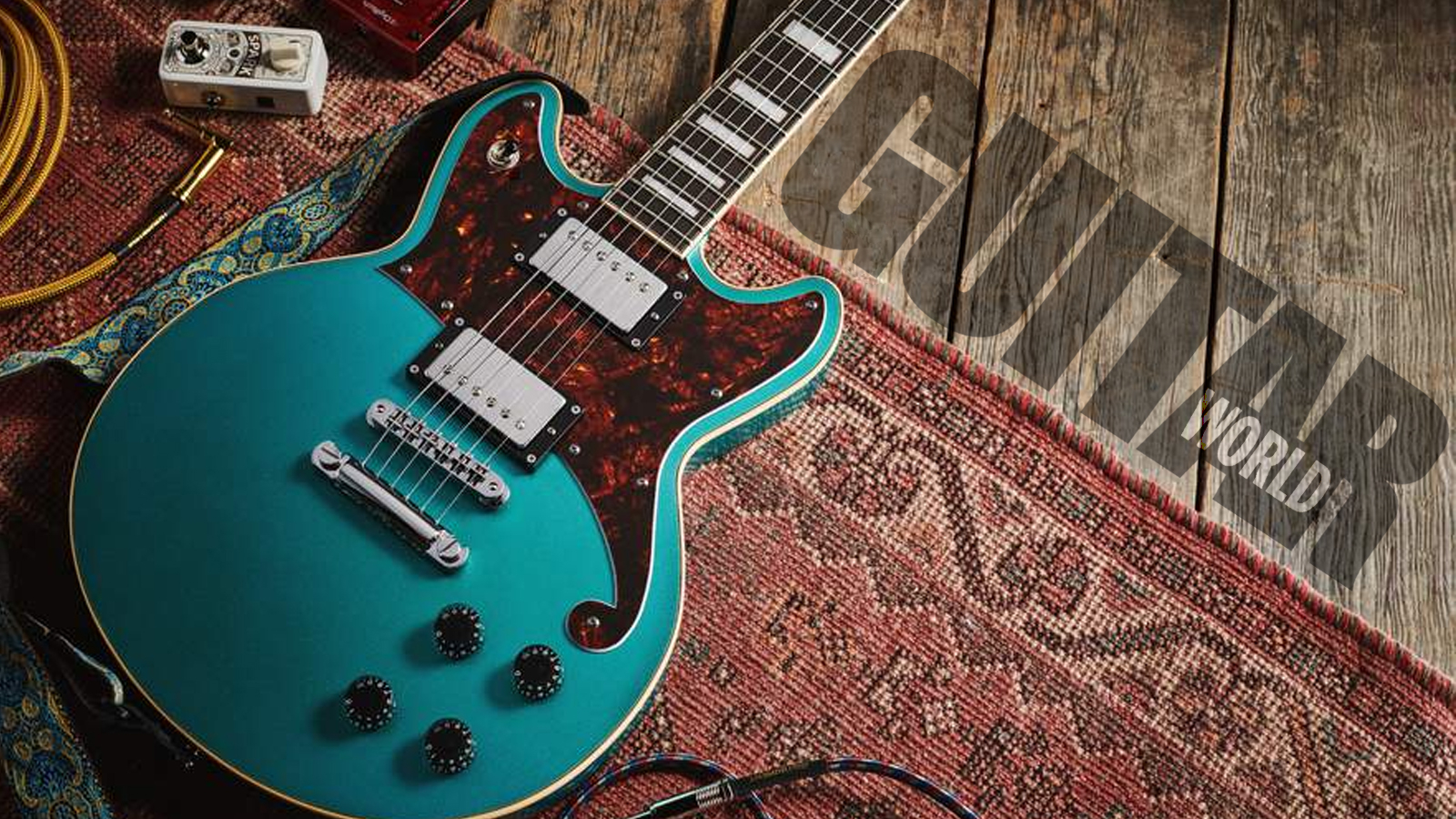
☑️ A global audience of 3.8 million guitarists monthly
☑️ Over 40,000 reviews on GuitarWorld.com
☑️ 30+ years of product testing at Guitar World
Guitar World boasts over 44 years of expertise and stands as the ultimate authority on all things related to guitars. The magazine and website feature expertly written gear round-ups and top-quality, authoritative reviews penned by a team of highly experienced industry professionals.
Guitar World's inaugural print issue hit the shelves in July 1980, and ever since, it has been captivating players and enthusiasts with engaging lessons, insightful interviews with the biggest guitar heroes, and priceless buying advice for newbie players.
Furthermore, GuitarWorld.com continues this legacy online and serves as the hub of the world's foremost authorities on guitar playing. The site not only hosts content from Guitar World but also showcases articles from respected publications such as Guitarist, Total Guitar, Guitar Techniques, and Bass Player. With a reach extending to 3.8 million players each month, GuitarWorld.com is a go-to destination for guitar fanatics globally.
Below you'll find more information on the expert authors of this guide.

Alex Lynham is a gear obsessive who's been collecting and building modern and vintage equipment since he got his first Saturday job. Besides reviewing countless pedals for Total Guitar, he's written guides on how to build your first pedal, how to build a tube amp from a kit, and briefly went viral when he released a glitch delay pedal, the Atom Smasher.
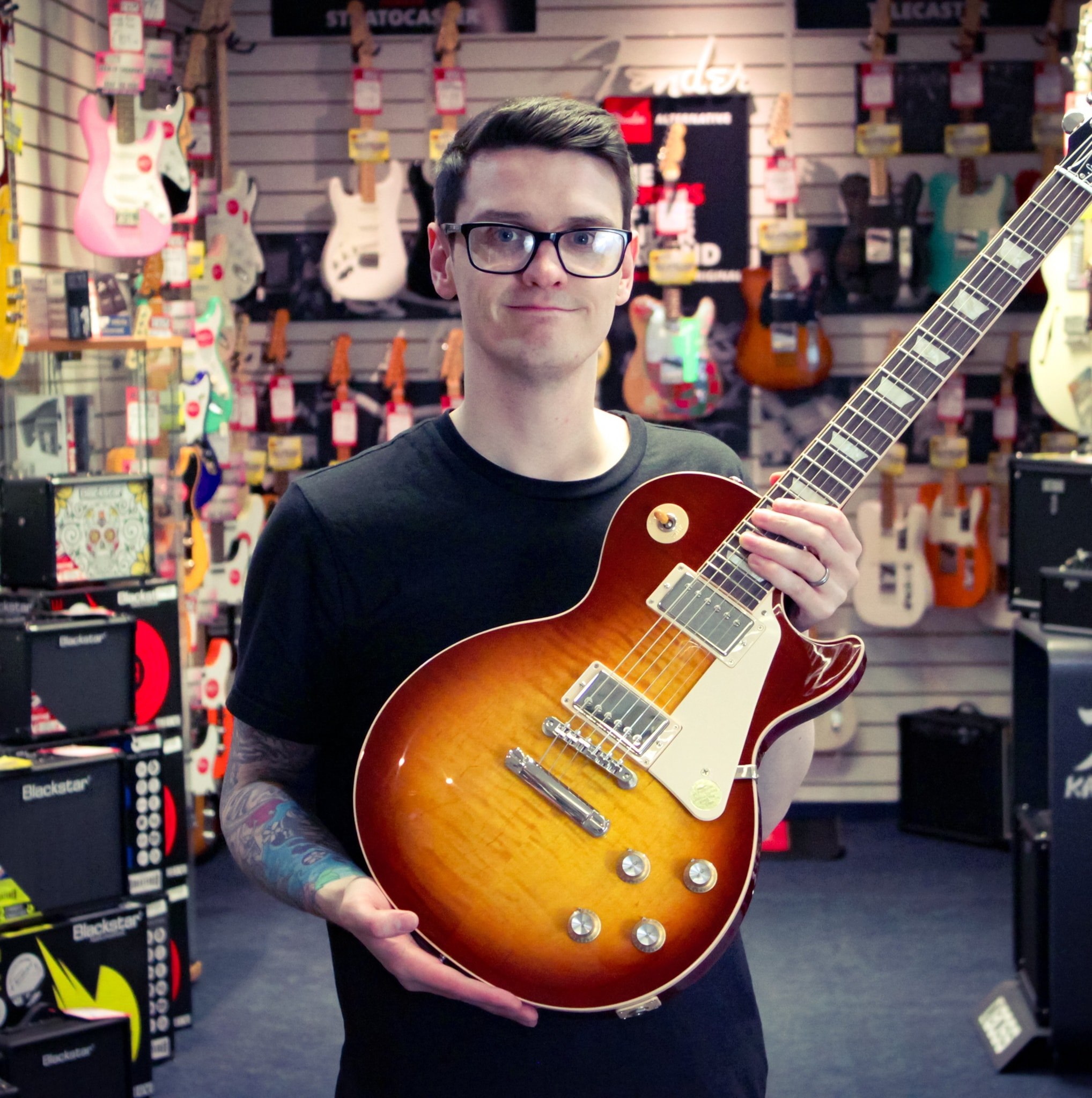
Daryl is a Senior Deals Writer at Guitar World, where he creates and maintains our 200+ buyer's guides, finds the best deals on guitar products, and tests the latest gear. His reviews have been featured in prominent publications like Total Guitar, Future Music magazine, and MusicRadar.com.
During his career, he has been lucky enough to talk to many of his musical heroes, having interviewed Slash and members of The Offspring, Foo Fighters, Sum 41, Thrice, and more. In a past life, Daryl worked in music retail. For a little under a decade, he advised everyone from absolute beginners to seasoned pros on the right gear for their needs.

After spending a decade in music retail, I’m now a freelance writer for Guitar World, MusicRadar, Guitar Player and Reverb, specialising in electric and acoustic guitars, bass, and almost anything else you can make a tune with. When my head’s not buried in the best of modern and vintage gear, I run a small company helping musicians with songwriting, production and performance, and I play bass in an alt-rock band.
How we choose
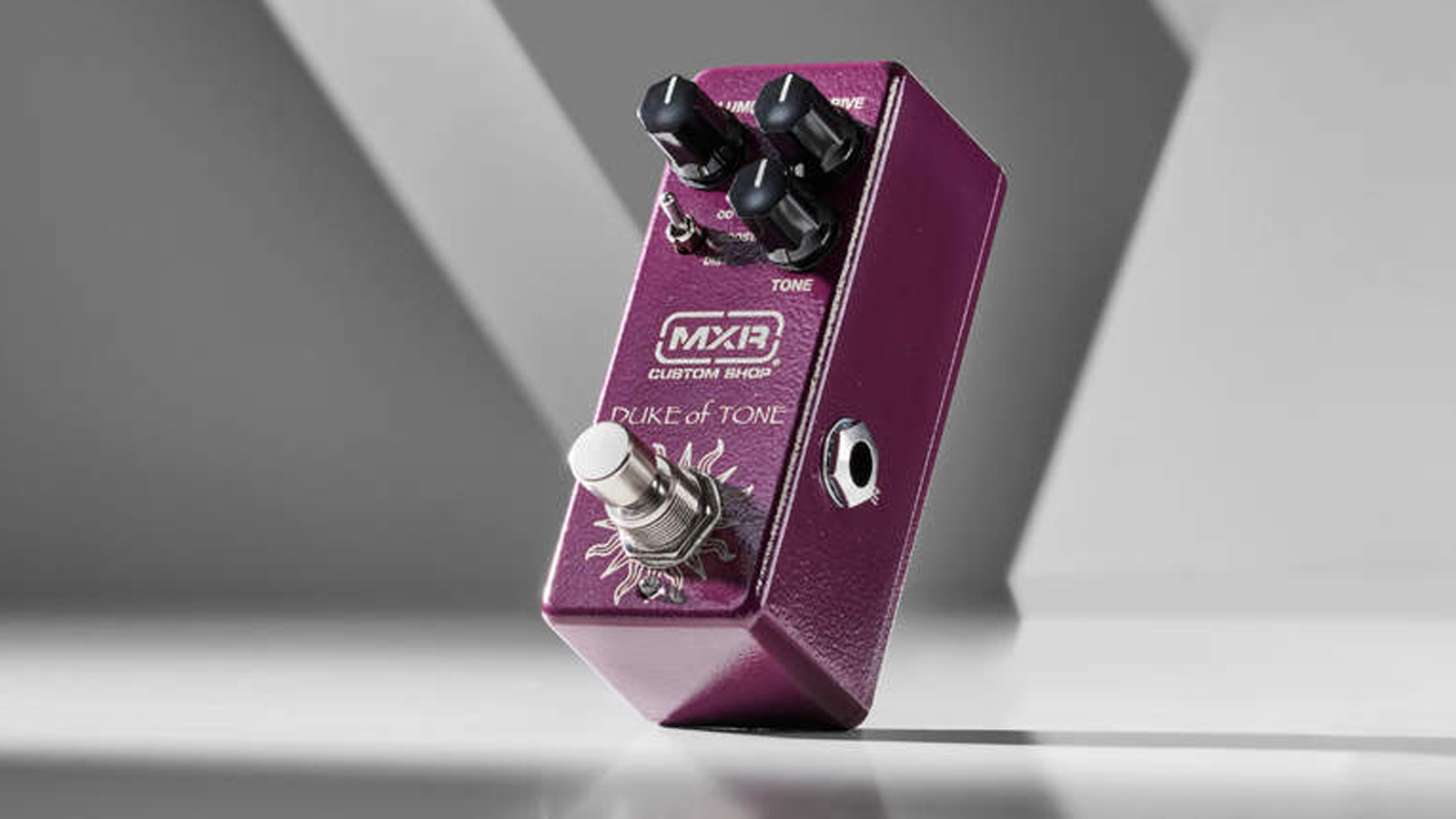
Here at Guitar World, we are experts in our field, with many years of playing and product testing between us. We live and breathe everything guitar and bass related, and we draw on this knowledge and experience of using products in live, recording and rehearsal scenarios when selecting the products for our guides.
When choosing what we believe to be the best overdrive pedals available right now, we combine our hands-on experience, user reviews and testimonies and engage in lengthy discussions with our editorial colleagues to reach a consensus about the top products in any given category.
First and foremost, we are guitarists, and we want other players to find the right product for them. So we take into careful consideration everything from budget to feature set, ease of use and durability to come up with a list of what we can safely say are the best overdrive pedals on the market right now.
Read more about our rating system, how we choose the gear we feature, and exactly how we test each product.
Related buyer's guides
You can trust Guitar World
- Explore FX with the best guitar pedals for beginners
- The best boost pedals for every budget
- 12 killer cheap guitar pedals you need to try
- Check out the best Tube Screamer clones
- Get all wobbly with the best tremolo pedals
- Our pick of the best Klon clones for every budget
- Add some depth with the best delay pedals
- Bring a sense of space to your tone with the best reverb pedals
Get The Pick Newsletter
All the latest guitar news, interviews, lessons, reviews, deals and more, direct to your inbox!
Alex Lynham is a gear obsessive who's been collecting and building modern and vintage equipment since he got his first Saturday job. Besides reviewing countless pedals for Total Guitar, he's written guides on how to build your first pedal, how to build a tube amp from a kit, and briefly went viral when he released a glitch delay pedal, the Atom Smasher.
- Richard Blenkinsop
- Daryl RobertsonSenior Deals Writer
